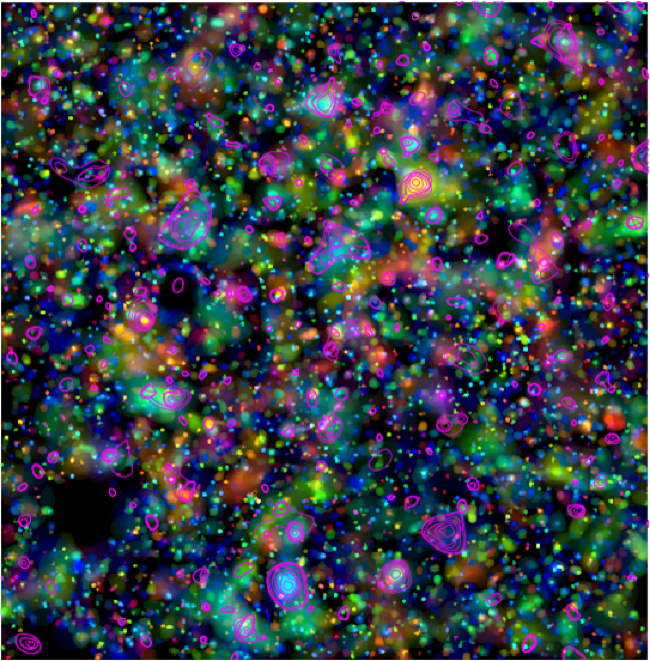
 Credit: Leauthaud, et al. (2010); ESA
Credit: Leauthaud, et al. (2010); ESA
Web of Darkness
Even though astronomers believe the Universe to be constructed of Dark Matter, no one really knows what Dark Matter is. It apparently only interacts through its gravitational attraction with normal matter, so that even its simplest properties are mostly unknown: does it change with time, do you have more dark matter if you have more normal matter, etc. The seeming impossibility of characterizing the invisible makes studies of Dark Matter properties daunting, but astronomers are nothing if not resolute. The image above shows one of the latest attempts to study Dark Matter. This image shows the galaxy density in the Cosmological Evolution Survey (COSMOS) field, with colors representing the redshift distance of galaxies in the image. These galaxies span a wide range of redshift, from a redshift of 0.2 (shown in blue) to 1 (red). Astronomers can study the galaxy clusters in the COSMOS survey and determine the total amount of matter, both the visible and Dark forms, using a statistical measure of the bending of light by the space-time distortion of the gravitating matter. The contours in pink show X-ray brightness profiles of the clusters as measured by the XMM-Newton X-ray Observatory. The X-ray data are vital to measure the total mass of only the normal matter held bound by a cluster. Using the large span of redshift distance in the COSMOS survey, astronomers hope to constrain how Dark Matter evolves with the Universe, one step closer to solving its mystery.
Published: February 8, 2010
<
HEA Dictionary ● Archive
● Search HEAPOW
● Other Languages
● HEAPOW on Facebook
● Download all Images
● Education ● HEAD
>

Each week the HEASARC
brings you new, exciting and beautiful images from X-ray and Gamma ray
astronomy. Check back each week and be sure to check out the HEAPOW archive!
Page Author: Dr. Michael F. Corcoran
Last modified Monday, 26-Feb-2024 17:34:49 EST


